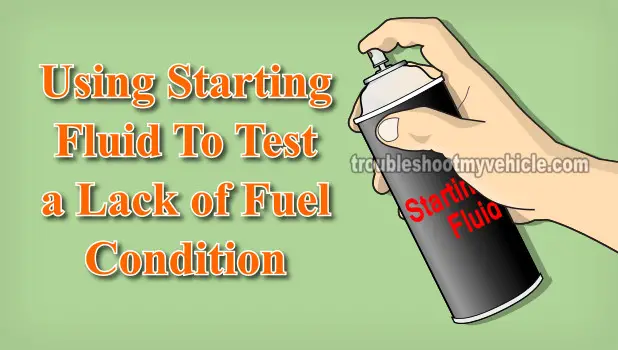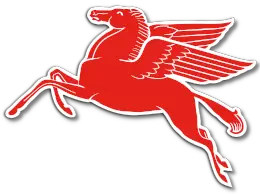
It's super easy to test the fuel pump's pressure with a fuel pressure test gauge on the 1987-1996 Ford E-Series full-size vans.
In this tutorial, I'm going to explain how to test the fuel pump using a fuel pressure test gauge.
I'm also including instructions on how to perform a starting fluid test, which will help you find out if the fuel pump is causing a no-start problem.
Contents of this tutorial:
APPLIES TO: This tutorial applies to the following vehicles:
- Ford E150: 1987, 1988, 1989, 1990, 1991, 1992, 1993, 1994, 1995, 1996.
- Ford E250: 1987, 1988, 1989, 1990, 1991, 1992, 1993, 1994, 1995, 1996.
- Ford E350: 1987, 1988, 1989, 1990, 1991, 1992, 1993, 1994, 1995, 1996.
WIRING DIAGRAMS: The following fuel pump circuit wiring diagrams may come in handy:
- Fuel Pump Wiring Diagram (1992-1993 Ford E150, E250, E350).
- Fuel Pump Wiring Diagram (1994-1995 Ford E150, E250, E350).
- Fuel Pump Wiring Diagram (1996 Ford E150, E250, E350).
ENGINE NO-START DIAGNOSTICS:
Symptoms Of A Bad Fuel Pump
For the most part, a bad fuel pump will cause one of two problems:
- The engine is not going to start.
- -or-
- The engine is going to start, but it's not going to run correctly.
If the fuel pump still functions but doesn't send the correct amount of fuel, you'll see one or more of the following symptoms:
- The engine takes longer than usual to start (extended cranking).
- The engine's idle is very rough.
- The engine backfires thru' the intake manifold under load.
- The engine starts then dies.
The fuel pump pressure test will let us know if the fuel pump is behind any of these symptoms (or not).
NOTE: If you're troubleshooting an engine no-start problem, the following guide is a good resource:
Where To Buy A Fuel Pressure Test Gauge
The fuel pressure tester is one of those must-have tools for diagnosing the fuel injection system on the Ford E150 (E250, E350).
The following fuel pressure test kits have the adapter you'll need to connect the gauge to the Schrader valve on the fuel injector rail.
Disclosure: As an Amazon Associate, I earn from qualifying purchases. If my tutorials help you, using these links is an easy way to support the site at no extra cost to you. Thank you!
Using A Fuel Pump Pressure Tester To Test The Fuel Pump
As I mentioned at the beginning of the tutorial, it's super easy to test the fuel pump's pressure with a fuel pressure test gauge.
This is because your Ford E150 (E250, E350) van's fuel system comes equipped with a Schrader valve, and it's to this valve that we can connect a fuel pressure test gauge.
The location of the Schrader valve is on the fuel injector rail. Photo 1 of 2 shows the Schrader valve on the 5.0L and 5.8L V8 engines.
Photo 2 of 2 shows the location of the Schrader valve on the 4.9L L6 engine.
NOTE: If you don't have a fuel pressure tester with the correct adapter, take a look at this section: Where To Buy A Fuel Pressure Test Gauge.
The fuel pump pressure for the 1987-1996 4.9L E-Series vans is:
- 50-60 PSI Key On Engine Off (KOEO).
- 45-60 PSI Key On Engine Running (KOER).
The fuel pump pressure for the 1987-1996 5.0L, 5.8L V8 E-Series vans is:
- 35-45 PSI Key On Engine Off (KOEO).
- 30-40 PSI Key On Engine Running (KOER).
FUEL PUMP INERTIA SWITCH: Before you begin, check that the fuel pump inertia switch hasn't been tripped. You can reset it simply by pushing down on its top button. You'll feel a 'click' when it resets (if it was tripped).
OK, these are the test steps:
- 1
Place a shop towel around the Schrader valve. The shop towel will absorb any fuel that may leak when doing step 3.
- 2
Remove the plastic protective cap from the Schrader valve.
- 3
Connect the test adapter to the Schrader valve.
- 4
Connect the fuel pressure gauge to the adapter.
- 5
When ready, ask your helper to cycle the key on and off but don't crank the engine while observing the fuel pressure tester's gauge.
Check your connections for fuel leaks. - 6
Crank the engine and check the fuel pressure gauge. Your fuel pressure gauge should register the specified fuel pressure.
Let's examine your test result:
CASE 1: The fuel pressure test gauge registered 0 PSI. This test result confirms that the engine is not starting due to a lack of fuel.
You can conclude that the fuel pump is not functioning and is the cause of the engine's no-start problem.
CASE 2: The fuel pressure gauge registered the indicated fuel pressure specification. This is the correct and expected test result and it confirms that the fuel pump is OK.
CASE 3: The fuel pressure gauge registered a fuel pressure way below the specification. This test result lets you know that the fuel pump is failing. Replace the fuel pump.
Using Starting Fluid

When I first started working on cars as an automotive technician, most of the vehicles on the road had carburetors. And the starting fluid test was the go-to test to check the fuel pump.
Even though all of the Ford E-Series van's covered by this tutorial are fuel injected, the starting fluid test still comes in handy (especially if you don't have a fuel pressure test gauge).
I do want to let you know that the starting fluid test is not the most accurate way to find out if the fuel pump is bad or not. Still, it'll give you a head start on your engine's no-start diagnostic.
IMPORTANT: To get the most accurate test result from the starting fluid test, you need to make sure that all spark plug wires are sparking before starting the test. Test all spark plug wires for spark with a dedicated spark tester if you haven't already.
OK, this is what you'll need to do:
- 1
Remove the intake air duct from the throttle body.
You don't have to completely remove it, since you'll have to reconnect it in one of the next steps. - 2
Open the throttle manually, and spray starting fluid down the bore.
When you have sprayed a good squirt of starting fluid, quickly reconnect the air duct to the throttle body (you don't have to tighten the hose clamp).
Reconnecting the intake air duct is a very important safety precaution in case you get a back-fire thru' the intake manifold. - 3
Crank the engine once the intake air duct is back on the throttle body.
- 4
You'll get one of two results with this test:
1.) The engine will start momentarily and after a few seconds will die.
2.) The engine will only crank but not start at all.
OK, let's find out what your results mean:
CASE 1: The engine started and ran for a few seconds. This test result lets you know that the engine's no-start problem is due to lack of fuel.
It's important to remember that this isn't the most accurate way of diagnosing a bad fuel pump. If I were in your shoes I would test the fuel pump's fuel pressure with a test gauge. For this test go to: Using A Fuel Pump Pressure Tester To Test The Fuel Pump.
CASE 2: The engine did not start, not even momentarily. This test result most always tells you that the engine's no-start problem IS NOT due to a lack of fuel from the fuel pump.
Remember, this test is not an accurate way of testing the fuel pump. I suggest you do one more test and this is to test the fuel pump's fuel pressure with a test gauge. For this test go to: Using A Fuel Pump Pressure Tester To Test The Fuel Pump.
More Ford E150, E250, And E350 Tutorials
You can find a complete list of tutorials for the full-size Ford E-Series vans here: Ford 4.9L, 5.0L, 5.9L Index Of Articles.
Here's a small sample of the tutorials you'll find:
- Manifold Absolute Pressure MAP Sensor Test (Ford 4.9L, 5.0L, 5.8L).
- Ignition Coil Test -No Spark No Start Tests (Ford 4.9L, 5.0L, 5.8L).
- How To Troubleshoot A No Start (Ford 4.9L, 5.0L, 5.8L).
- Testing A Blown Head Gasket (Ford 4.9L, 5.0L, 5.8L).
- How To Test Engine Compression (4.9L, 5.0L, 5.8L).

If this info saved the day, buy me a beer!






